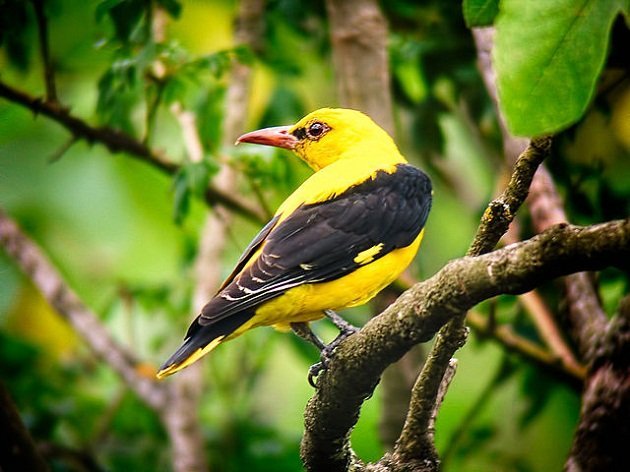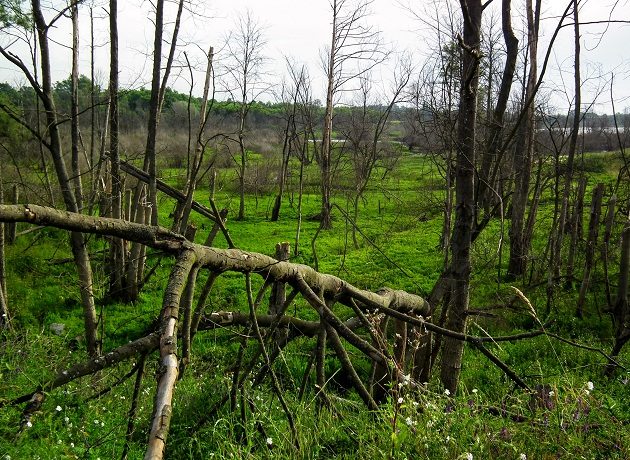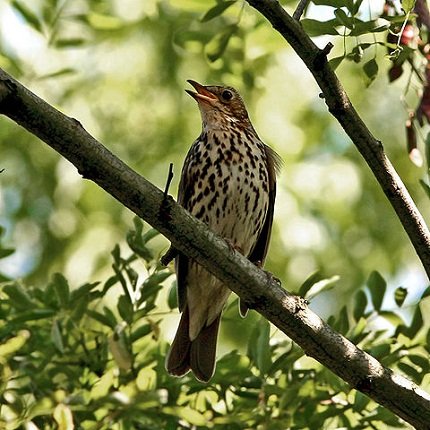
It has been a while since I birded a new area for the first time – I sure missed the feeling. And now I am about to explore a dam, not far from the village where my mother was born. I used the family summer cottage as a base camp, placed in an old orchard where no branches are ever cut off, even when old or rotten – only supported from below. As a result, I had 15 species in the first hour.
Paljuvi Dam, some 30 miles SW of Belgrade, Serbia, is a known angling, but not so well known birding destination. Only since an English birder Geoff Laight moved to a nearby village has the dam received more attention. Laight has recorded some 100 species here, including Slavonian (Horned) Grebe and Red-rumped Swallow (the first is a rare migrant/wintering species only, while the second one is an uncommon breeder).
It is the first morning of June, half past six and I am parked at the dam wall, scoping a mile long water surface surrounded with low hills. Black-headed Gulls and Great Crested Grebes, a few Whiskered and Common Terns, also Little Egret, Black-crowned Night and Grey Herons, as well as just one pair of Mallard.
All of these are reasonably common breeding species, yet, while Great Crested Grebes and Mallards do nest at the dam, only Grey Herons are known to nest some 15 miles from here. Other herons, egrets, gulls and terns are a surprise at this time of the year. And a puzzle.
Where did seven Little Egrets and a dozen Black-crowned Night Herons come from? Is there an unknown heronry somewhere around here? Or are these birds taking a year off to see the world?
Also, Black-headed Gulls (4) and Common Terns (4) need pebbled or short grass, water-surrounded bars to nest. These do not exist at the dam, but are possible in local rivers (yet, breeding there is unlikely because of changeable water levels) or in some extraction pit at the nearby coal mine.
The biggest surprise are two Whiskered Terns, common lowland breeding birds that require ponds to lay their eggs on floating leaves of waterlilies. There are no waterlilies here, but perhaps in some unused mine pit? This species nests in colonies and may forage up to 6 miles away from breeding sites and the nearest mine pits are some 4-5 mi from here.

Decent tarmac follows the western dam shore, surrounded by a belt of dead trees. They are not in the water, but the rise in the underground water table has drowned them. From there hedges, meadows and gardens spread. Birds include Common Nightingales, Eurasian Golden Orioles and Blackcaps, Common (Greater) Whitethroat, Eurasian Blue and Long-tailed Tits… I can hear a distant „trrrrr, trrrrrrr“ and I wonder, it sounds like the European Turtle Dove, but it has been a while since I heard it – could it be anything else? No, it cannot. Soon, I see one on a highest branch of one of those dead trees.
Tarmac gives place to macadam which leads me away from the dam, into more open countryside dominated by arable fields, still intercepted with hedges and a riparian forest along the stream. More common now are Corn Buntings and Red-backed Shrikes, together with omnipresent orioles, lemon-yellow with black wings. (It was such a frustration when, as a budding beginner, I discovered that there are some quite common lemon-birds around and I had never laid my eyes on any of those!)
The road has deteriorated into a dirt track by now. Is it possible to drive all the way around the dam? One angler told me that it is not, but Google Earth suggests otherwise (as a parting greeting, I wished him a „good fishing“ and he didn’t respond. Was he merely rude or do they not say that? Did I jinx him? Should I have said „break a rod“ or something?). So, I looked for a local expert and saw a granny firmly holding a rope tied to a grazing cow, which probably has a habit of wandering away.
 Song Thrush by Taco Meeuwsen / Wikimedia Commons
Song Thrush by Taco Meeuwsen / Wikimedia Commons
She was already puzzled when she saw my scope protruding through the window, pointed to another Turtle Dove, hence, I showed her my binoculars and offered an explanation of my weird behaviour without waiting for a question. No, son, she said, you cannot go around, the road is unkempt and overgrown, but if you veer right 500 metres after the bridge, you can reach the village of Lajkovac.
Now, I am driving a low clearance hedgeback, what is the road like? Worse than this? No, she said, it is a good road. That can be a matter of perspective – I am driving and she is walking.
She was half-right, it turned out. Several large puddles awaited me before and after the bridge over the stream that feeds the dam, and a gully in the middle of the dirt track after the turn off, but at the time it was passable (after the mid-day shower, it will not be). I can hear a Song Thrush from the bushes, another Nightingale is showing up, Eurasian Blackbirds are active, another lemon-oriole is in flight, this one with some morsel in its beak taking it to its offspring. The first Common Cuckoo of the morning is singing.
Close to the first farmstead I see a European Stonechat and then join the tarmac. The only question is, is the town of Lajkovac left or right? Flipping a coin, I go right, only to stop in front of the first village shop to ask for directions. I didn’t need to hear the answer, their expressions told me that the town must be in the direction I am coming from. I hear pieces of their conversation, „he has Belgrade plates“, „oh“, sounding like „that explains everything, those city folk“.
…
On my way back to the base camp, I find a Lesser Grey Shrike, and later, sitting in the orchard, hear a strange, yet seemingly familiar bird sound. Checking my phone… yes, a Corncrake! Not that I have seen it, but this threatened grass skulker is notoriously hard to see.
Cover photo: Oriolus oriolus by Paco Gómez / Wikimedia Commons











What a nice morning of birding. I would love to see some of those flying lemons.